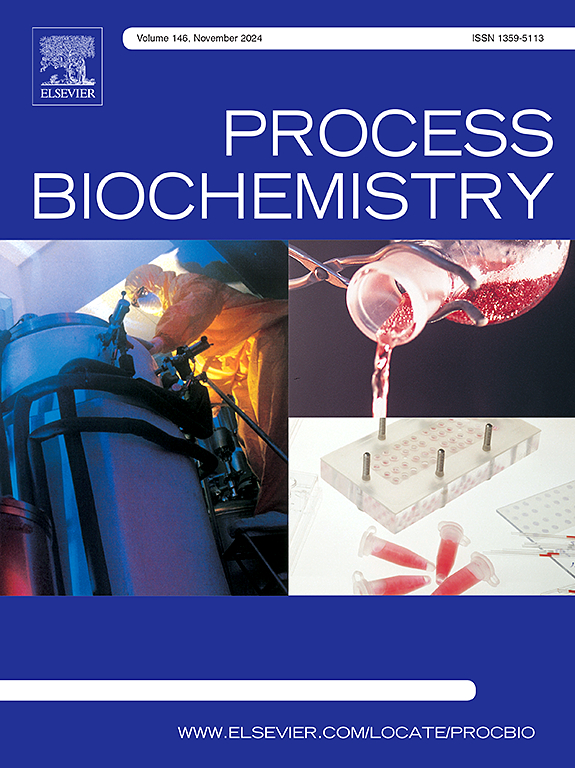Reaction pathways and integral kinetics for hydrolysis of soybean oligosaccharides by α-galactosidase and invertase
IF 3.7
3区 生物学
Q2 BIOCHEMISTRY & MOLECULAR BIOLOGY
引用次数: 0
Abstract
The increasingly produced soybean molasses lacks value-added applications because its oligosaccharides stachyose and raffinose are poorly digestible/hydrolysable by many organisms. Enzymatic upgrading can be effective, but no study has previously examined and modeled its full complexity. This study addresses this knowledge gap by developing comprehensive models and evaluating them with results of enzymatic hydrolysis of, progressively, pure sucrose, melibiose, raffinose and stachyose, and then soybean molasses. The models considered all possible reaction pathways, competitive inhibition among substrates and intermediates, and kinetic decline of enzyme activities. The kinetic parameters, obtained from regression of concentration profiles for all carbohydrates (substrate, intermediates, and products), offered important insights into enzymatic hydrolysis of soybean galacto-oligosaccharides. Most importantly, digalactose was, for the first time, shown to form appreciably during stachyose hydrolysis (by breakage of mid-structure α-1,6 galactose-glucose bond), with rates comparable to the commonly recognized raffinose formation (by cleavage of terminal galactose). On the other hand, the invertase-catalyzed breakdown of stachyose to manninotriose (+ fructose) was much less significant. Further, the A. niger invertase could remove fructose from sucrose, raffinose, and stachyose, but with substantially different effectiveness: sucrose > raffinose > stachyose. Practically, the models developed are valuable to the development of enzymatic soybean-molasses upgrading process.
求助全文
约1分钟内获得全文
求助全文
来源期刊

Process Biochemistry
生物-工程:化工
CiteScore
8.30
自引率
4.50%
发文量
374
审稿时长
53 days
期刊介绍:
Process Biochemistry is an application-orientated research journal devoted to reporting advances with originality and novelty, in the science and technology of the processes involving bioactive molecules and living organisms. These processes concern the production of useful metabolites or materials, or the removal of toxic compounds using tools and methods of current biology and engineering. Its main areas of interest include novel bioprocesses and enabling technologies (such as nanobiotechnology, tissue engineering, directed evolution, metabolic engineering, systems biology, and synthetic biology) applicable in food (nutraceutical), healthcare (medical, pharmaceutical, cosmetic), energy (biofuels), environmental, and biorefinery industries and their underlying biological and engineering principles.
 求助内容:
求助内容: 应助结果提醒方式:
应助结果提醒方式:


